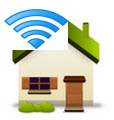In the digital age, the quality of your audio can make or break your content. Whether you’re a podcaster, gamer, musician, or a professional in the cable and electric industry, having the right microphone setup is crucial. This comprehensive guide will walk you through the process of connecting a microphone to your device, be it a PC, laptop, Mac, or iPad.
Types of Microphones
Before we dive into the steps, let’s familiarize ourselves with the different types of microphones available:
- Dynamic Microphones: Perfect for live performances or recording louder sound sources like drums.
- Condenser Microphones: More sensitive and ideal for recording vocals, acoustic instruments, or quiet sound sources.
- USB Microphones: Plug-and-play and do not require any additional equipment. They’re a great option for beginners or those who need a portable setup.
Steps to Connect a Microphone
Step 1: Determine Your Device’s Input
The first step is to identify the input on your device. Most devices will have a 3.5mm jack or a USB port for audio input.
Step 2: Select the Right Cable
Depending on your microphone and device, you may need a specific cable or adapter. Here are some common options:
- XLR Cable: A three-pin cable that connects a microphone to a mixer or audio interface.
- TRS Cable: A 1/4 inch cable that connects a microphone to a mixer or audio interface.
- USB Cable: A plug-and-play option that connects directly to your device.
Step 3: Connect the Microphone
Once you have the right cable or adapter, connect the microphone to your device’s input. Ensure the cable is securely plugged in.
Step 4: Adjust Settings and Test
Depending on your device, you may need to adjust the audio settings to recognize the microphone input. You can usually find these settings in the audio or sound preferences. Once you’ve adjusted the settings, test your microphone to make sure it’s working properly.
Tips for Better Microphone Recording
Now that you know how to connect your microphone, here are some tips for better recording:
- Choose the right microphone for your needs.
- Use a pop filter to reduce plosives and sibilance.
- Position the microphone correctly for optimal sound quality.
- Use headphones to monitor your recordings and reduce background noise.
- Experiment with different microphone placements and settings to find the best sound for your needs.
Conclusion
Connecting a microphone to your device may seem daunting, but it’s actually a simple process. By following these steps and tips, you’ll be able to record high-quality audio in no time. Remember to choose the right microphone for your needs and experiment with different settings to find the best sound for your recordings.






0